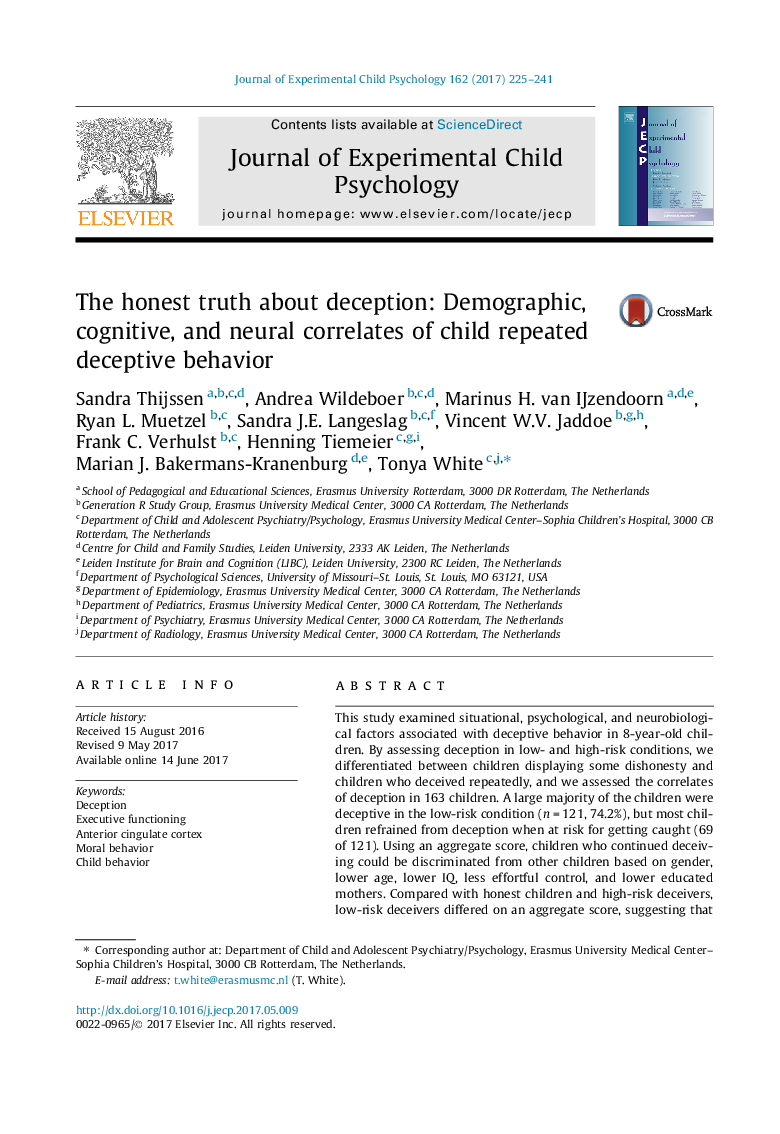| کد مقاله | کد نشریه | سال انتشار | مقاله انگلیسی | نسخه تمام متن |
|---|---|---|---|---|
| 5039895 | 1473450 | 2017 | 17 صفحه PDF | دانلود رایگان |
- Deception in children depends on the probability of getting caught.
- High-risk deceivers have less developed cognitive abilities than other children.
- High-risk deceivers show less ACC activity than honest children and low-risk deceivers.
- Deception in a high versus low-risk situation relates to increased ACC activity.
This study examined situational, psychological, and neurobiological factors associated with deceptive behavior in 8-year-old children. By assessing deception in low- and high-risk conditions, we differentiated between children displaying some dishonesty and children who deceived repeatedly, and we assessed the correlates of deception in 163 children. A large majority of the children were deceptive in the low-risk condition (n = 121, 74.2%), but most children refrained from deception when at risk for getting caught (69 of 121). Using an aggregate score, children who continued deceiving could be discriminated from other children based on gender, lower age, lower IQ, less effortful control, and lower educated mothers. Compared with honest children and high-risk deceivers, low-risk deceivers differed on an aggregate score, suggesting that they were more likely to be girls and to come from higher income families. Compared with the other children, high-risk deceivers showed decreased activation in the bilateral anterior cingulate cortex (ACC) and right frontal pole during the low-risk condition, suggesting decreased engagement in conflict monitoring and error detection during opportunities for deception. In high-risk deceivers, high-risk deception was associated with increased bilateral ACC and right paracingulate gyrus activation compared with low-risk deception. High-risk deceivers may require a higher level of risk to engage the ACC to the same degree as low-risk deceivers or honest children. Our results suggest that deceptive behavior in children seems to be largely dependent on the estimated likelihood of getting caught. High-risk deceivers form a distinct group with different cognitive and neurobiological characteristics compared with honest children and low-risk deceivers.
Journal: Journal of Experimental Child Psychology - Volume 162, October 2017, Pages 225-241
